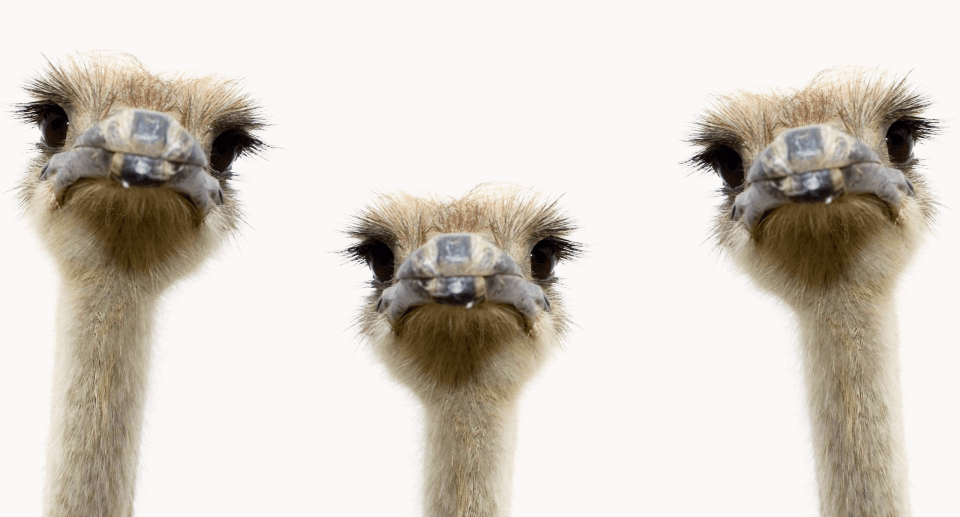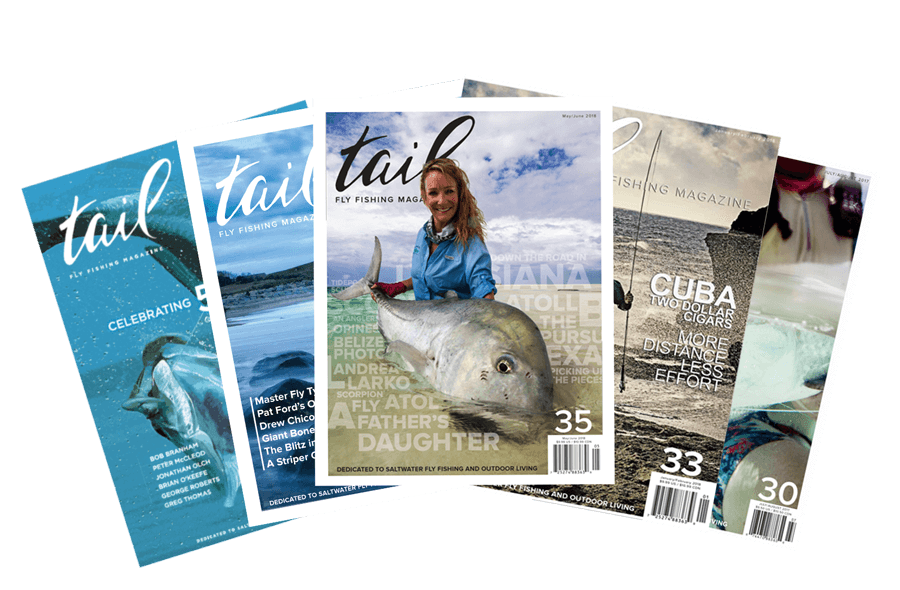By John C Melfi (Originally published in Tail #8 – November 2013)
Consider the Ostrich
When I was about
five I spent a startling amount of time dropping bait, scraggly fl ies, lures, even bare hooks off the end of a dock set in a beautiful blue lake. My hope was to catch some of the visible bluegills and rock bass. I used worms, grasshoppers, whatever natural critters I could catch – those never failed. Lures, fl ies, and bare hooks sometimes worked. Flies worked best, but they were inconsistent.
Often the
fish – and these were small guys, like 4-5 inchers – would nose up to the item and then just turn away. If there was no scent to the lure, these little opportunistic
fish were pretty much uninterested. Unless the fly/lure had built-in motion. After a few years of observation, I started trying to create a fly that would really interest these
fish even when the fly itself was not moving. Lures and stiff, plastic “ flies” didn’t have that inherent liveliness, so they were out. The materials built into the fl y had to move on their own; that was the key to effectiveness. Granted, these were tiny little panfi
sh; what can they possibly teach us about
fishing for big desirables?
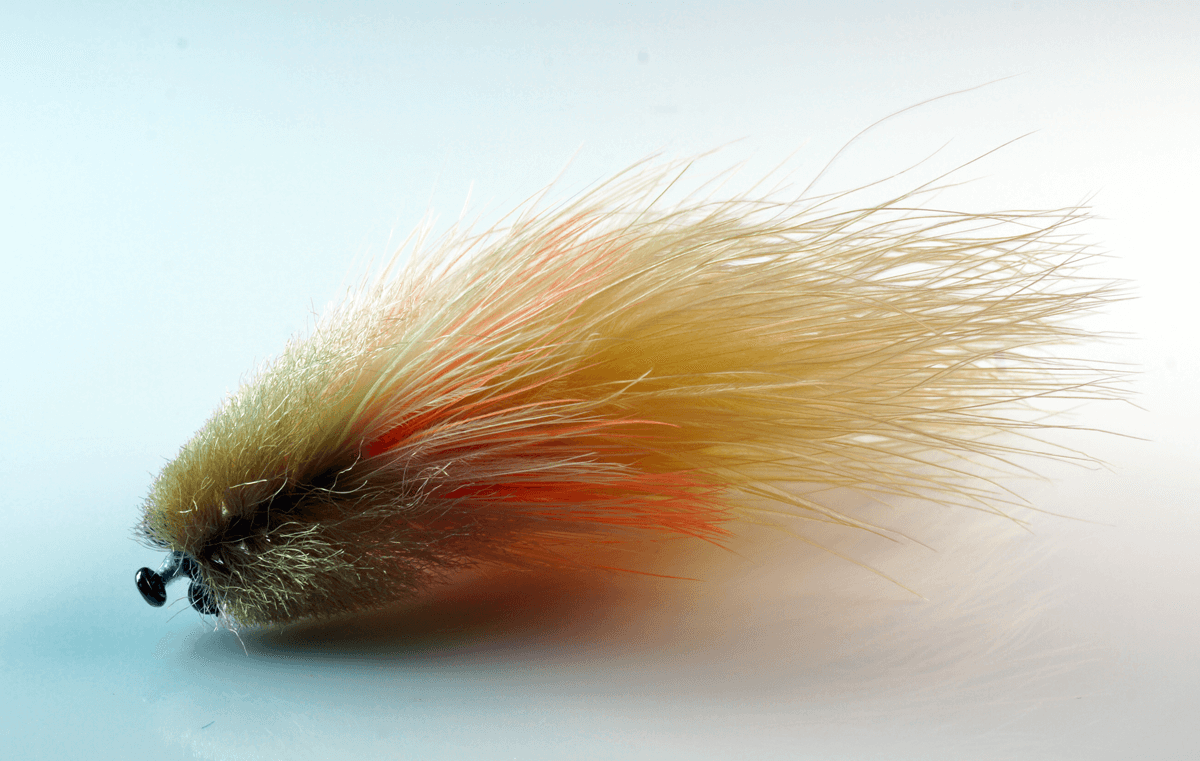
Plenty, as it turns out. I’ve become entirely convinced that, in most cases, a fly’s built-in motion is a major key to its effectiveness. Spidery legs of marabou wriggling in the current, rabbit strips undulating like a crazed eely-thing, the taunting wave of rubber legs; these are hugely important in attracting our most sought-after game
fish. The good news is that these active flies are becoming much more common in the local fly shop because they work. A quick note: these wiggly materials aren’t much used, and probably aren’t important to, fl ies that you’re going to be ripping through the water. For example, if you’re double-hand stripping a needlefi
sh fl y for flats ‘cudas, stick with stiffer synthetics. Same goes for those times when you need a fast-stripped fly for tunas, dorado, etc. But anytime you want a slower presentation, consider the ostrich. For whatever reason, ostrich herl hasn’t received its due fame. Perhaps the ostrich lobby is short on funding.
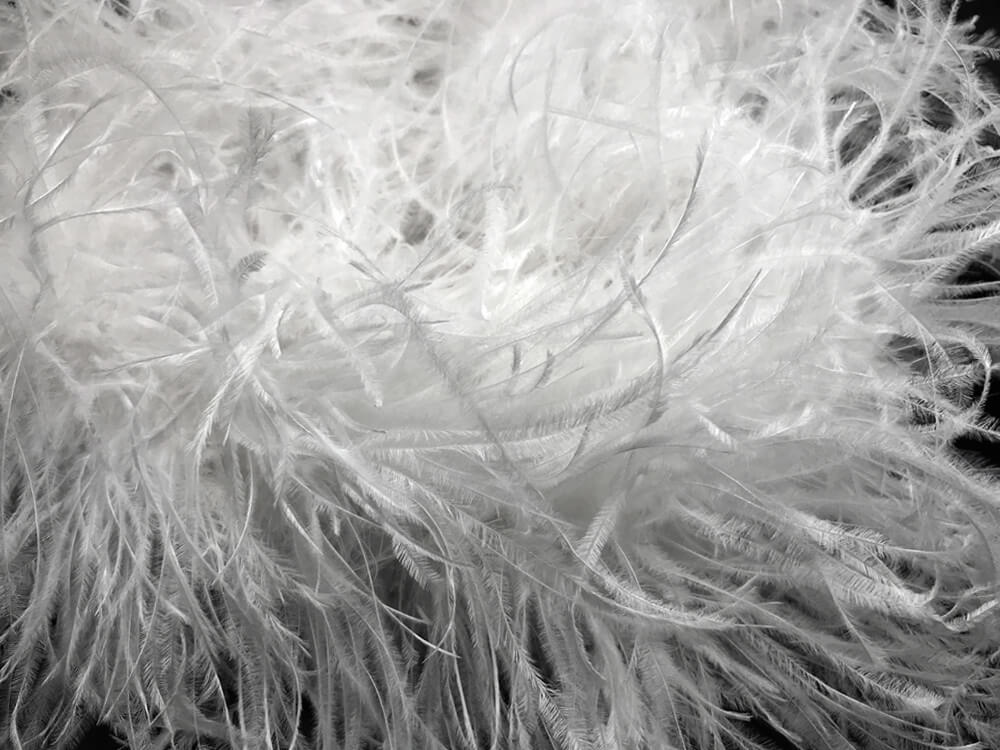
While ostrich herl has long been used for the butts on classic salmon fl ies, and on some freshwater patterns, it hasn’t gotten the acclaim it deserves for saltwater patterns. To see its advantages, it might be best to start with the shortcomings inherent in other lively materials. First up: Marabou is a fantastic material, as everyone knows. It sways and undulates with basically zero provocation. If a sea cucumber thinks about lunch, it’ll make marabou shimmy. The problem is that marabou is super delicate; even on non-toothy
fish like bones, it’s usually only good for a couple of
fish. Add to this that once it gets fish slime on it, it tends to clump up and lose its initial appeal. And finally, it fouls around a hook really easily. Rabbit strips solve the durability problem, and rabbit swims beautifully in the water. Rabbit strips are hugely attractive to most
fish, and they’d be ideal except for a couple things. First, rabbit strips soak up water, which makes them heavy, which makes them a bitch to cast. And second, rabbit, like marabou, is prone to insanity-provoking fouling.
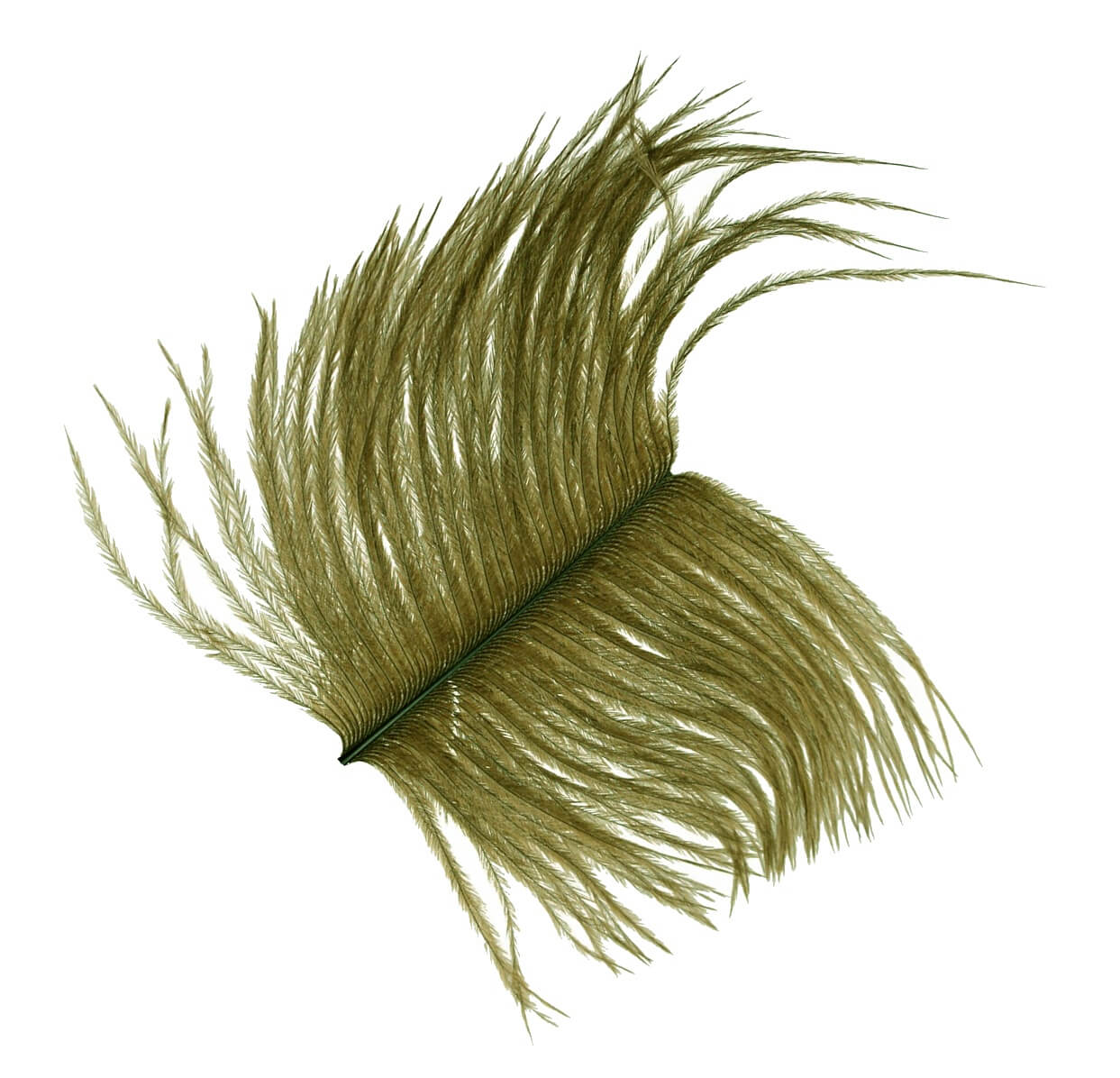
Ostrich herl may be the best of all worlds. If you even think about a current, no matter how soft, ostrich herl will respond to it by shaking and twitching. It moves in the water at least as well as rabbit or marabou. But it’s more durable than marabou, lighter and easier to cast than rabbit, and less prone to fouling than either of them. Flies that use ostrich as a significant part of their dressing tend to be most used for
fish that aren’t looking for lightning-fast prey. They excel for
fish like bones, permit, tarpon, striped bass, red
sh, wahoo –
fish that generally respond best to a slow presentation (yes, really, slow – or motionless – is good for wahoo). Probably the best-known use of ostrich herl has been in Lou Tabory’s hugely effective Snake Fly. Originally designed for Atlantic stripers and blue
fish, it works on everything. Same goes for the Dahlberg Diver ostrich-herl variations, which give length, an impression of bulk, and a terrific diving/resurfacing action, all in a relatively easy casting package. Beyond these specific models, ostrich herl’s uses in bone
sh, permit, and tarpon fl ies are limitless. If you’re a tier, just try subbing out the marabou, rabbit, bucktail, or synthetics for ostrich. You’ll be glad you did.

